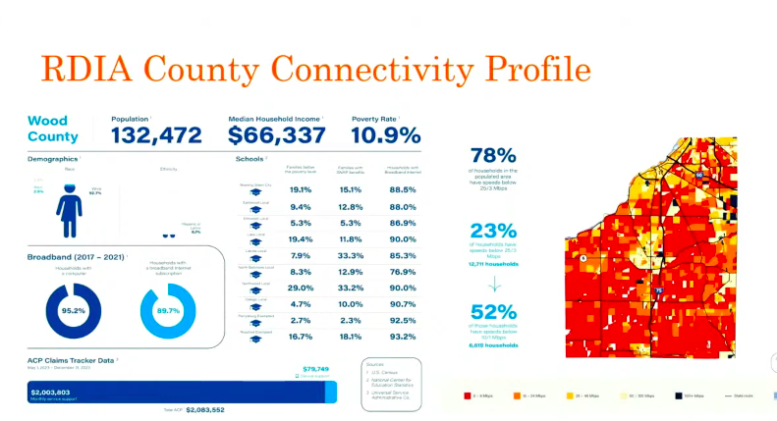Submitted by JEFF DENNIS
Bowling Green City Council, At-Large
Maintaining public infrastructure is one of the government’s most important responsibilities. Failing to invest in critical infrastructure like roads, bridges, electric grids, and water systems can hinder economic growth, limit job opportunities, and risk serious disruption to families’ day-to-day lives.
In today’s world, broadband access is another fundamental element of our public infrastructure system. This infrastructure is particularly important in small towns and rural areas. Sadly, nearly one in four Wood County households still do not have access to a reliable, high-speed internet connection. In 2024, access to this utility is no longer a luxury; it’s a necessity.
Fortunately, the last four years have seen a boom in broadband expansion nationwide. The bipartisan 2021 Infrastructure Investment and Jobs Act signed into law by President Biden includes $42 billion in funding for efforts to expand broadband access. With nearly $800 million being invested right here in Ohio, this landmark legislation will help close the digital divide for lower-income families in unserved and underserved areas of our state.
President Biden and congressional leaders like Senator Sherrod Brown have been effective in pushing for efficient broadband expansion. However, regulators within the President’s own administration have taken an overly aggressive regulatory approach that risks undermining much needed progress. Bureaucrats at the National Telecommunications and Information Administration, the Department of Commerce, and the Federal Communications Commission are proposing to give the federal government the power to set strict price caps on internet service. These overly restrictive regulations concentrate an enormous amount of power in the hands of unelected regulators. These overly restrictive regulations will slow the buildout of this critical infrastructure and lead to fewer technological advances in the years ahead.
Local, state, and federal regulations are necessary to protect our air and water and maintain health and safety standards for the food we eat and the medications we take. However, overregulation comes with its own risks. We’ve seen this happen in the recent past with broadband infrastructure investment. In 2009, then-President Obama was a driving force behind the creation of the $4 billion Broadband Technology Opportunities Program (BTOP). Like the 2021 Infrastructure Act, one of the goals of BTOP was to expand broadband services to underserved areas. However, when regulators set overly restrictive requirements on the program, major internet service providers failed to bid on new buildouts and millions of Americans who would have seen much needed investment in their communities were instead left without adequate access to reliable broadband for another decade.
Today, access to reliable, high-speed internet is a requirement for many working families. Investments in broadband infrastructure help support local businesses, give students access to educational tools, and allow rural areas to remain economically competitive. Thankfully, our elected officials have made this infrastructure a priority. It’s time for regulators to follow suit and develop program guidelines that permit and promote the continued expansion of broadband infrastructure.





